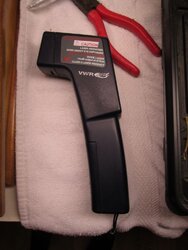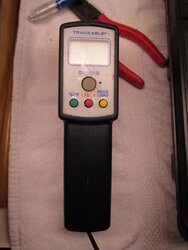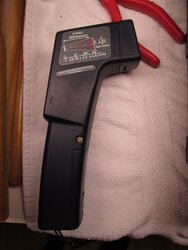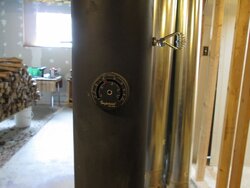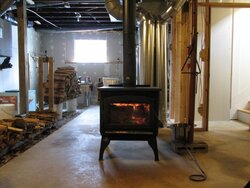Hi. I'm using my little 1.9 cf stove, located in the basement, and burning 24/7 in order to heat the 1 story house (we have an air to air heat pump to pick up the slack if the stove goes out). Thanks to you all, I've established a good convection loop between the basement and the main floor with a fan, and in general we've kicked the heat pumps butt, reducing our power bill in the process. The problem is that the stove always seems to run hot, really hot, after the secondaries kick in, usually running anywhere between 700-750 F on the stove top (measured with an IR gun) and 350-390 F on the single wall stove pipe (measured with a magnetic thermometer). I absolutely always have to monitor the burn very closely when I load it (3 times a day, once in morning, once with a small load between 5-6:00pm, and the overnight load around 10ish), because the stove top can easily take off and hit 800-850 at times (the flue will get up to around 400-410 F at these times). I've tried shutting the air down early, this seems to help a bit, but in reality it just seems to delay the eventual take-off; if I'm lucky it the stove top will only get as high as 700-725 F and then I breathe a sigh of relief, but most of the times it hovers around 750-765 F and I never really know if it's going to take off or not, so I have to just sit and watch and wait. And that's when I realized that this is probably burning through my loads of wood faster than it should. I can't help but wonder if I have too much draft pulling on the stove which feeds the secondaries so that they always take off like crazy regardless of how fast or how much I turn the air down. The chimney info is thus: approx 6 feet of single wall stove pipe up to the basement ceiling, another approximately 16 feet of proper class A chimney running through the house, and it looks like about 3 feet of chimney outside the roof, for a total of around 25 feet all together from the stove top. No obstructions or neighbours anywhere near me or my house. Could this be the problem and if so, how would I address it? I've looked all over the stove and there doesn't appear to be anywhere that I can use the old magnet trick to reduce the secondary air intake. I'll add a picture of the air flow for this particular stove from the owners manual in case it helps anyone with any ideas.....
Cheers,
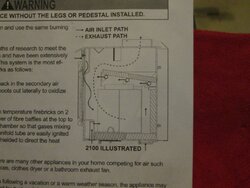
Cheers,





